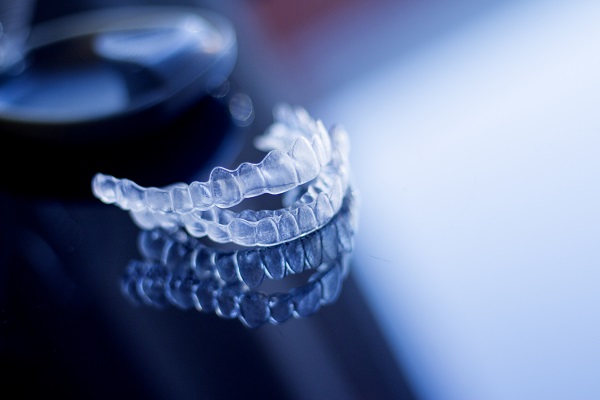3 Questions to Ask Your Orthodontist About Invisalign®

If you are thinking about starting Invisalign® treatment for your smile, it is time to speak to your dentist. The dentist has the knowledge and training to do what is right for your teeth, no matter how serious your condition is. Be prepared to ask your dentist questions about the process, the benefits and what the results will look like.
What Invisalign does
There was a time when conventional metal braces were the only orthodontic options for people. Luckily, clear aligners offer an alternative. These trays fit in the patient’s mouth and slowly but consistently move teeth into the right place. The aligners can straighten teeth and fix overbites, underbites and crossbites. Patients with a crowded mouth can also choose this treatment. It may also be effective for people with misshapen teeth or buck teeth.
Ask about the time frame
Most people want to know how long they will have to wear the clear aligners. There is nothing magic about Invisalign; the treatment requires a process like any other dental or orthodontic procedure. Still, it is nice to know that many patients can get through this treatment faster than with braces. While braces usually require a two- to three-year commitment, many people only have to wear Invisalign for 12 to 18 months. In more mild cases, the patient can complete the process in as little as six months.
Ask about maintenance
Along with the fact that Invisalign trays are practically invisible, patients can also remove them. This offers advantages that braces cannot match. Patients should remove the trays during mealtime. This keeps them clean and sanitary. To care for the aligners, patients should rinse them a few times throughout the day.
It is also good to soak the trays in a solution for 30 to 60 minutes a day. The dentist can recommend a solution. Along with continual good oral hygiene, the patient should brush the trays twice a day. This removes bacteria and prevents foul smells and stains.
Ask about the process
Before getting Invisalign trays, the patient will meet with the dentist to make sure this treatment is right. The dentist explains the procedure and highlights the benefits of it. After taking X-rays and making impressions, the dentist will devise a treatment plan. Then the patient will get the first aligner trays.
The trays will fit snugly in the patient’s mouth. Every two to four weeks, the patient will get a new set as the teeth begin to move. Regular checkups should occur every four to six weeks. At these appointments, the dentist will review the patient’s progress. The patient should ask questions or address any concerns at this time.
It is time for a new smile
It should be clear to see why Invisalign is a smart way to revive your smile. You can feel good about this process and what it will do for your self-esteem and oral health. When you are ready to get started, call a dentist near you and set up a time to discuss the next steps. Within a year and a half, you can have a brand-new look.
Request an appointment here: https://www.gablesexceptionaldentistry.com or call Gables Exceptional Dentistry at (305) 203-4132 for an appointment in our Coral Gables office.
Check out what others are saying about our services on Yelp: Read our Yelp reviews.
Related Posts
Dental veneers or dental crowns may be viable solutions to improve your teeth's appearance and functionality. These cosmetic dental treatments offer different approaches and benefits while addressing various dental issues. Discover which of these two transformative options is most suitable for you.Dental veneers are thin porcelain or composite resin shells that the dentist will custom-design…
A dental implant is the gold standard of dental restorations. It provides stability and natural-looking results. Understanding the benefits of implants can motivate you to see your general dentist about it. Here are the different oral health advantages of a dental implant.The titanium rod acts as the dental root. It merges with the jawbone and…
Dental crowns are restorations that can address a range of dental issues, from severely damaged teeth to protecting a tooth after a root canal. They help preserve oral health and enhance a smile's appearance. In addition to being versatile, they are available in different materials, which can be helpful for individuals who want options.Dental crowns…
Dental crowns are a reliable and effective tool for restoring damaged teeth. While most people think of dental crowns in relation to root canals, crowns can also restore beauty and function to cracked teeth. If you have fractured a tooth, a dental crown may be the solution you have been looking for.A dental crown sits…
